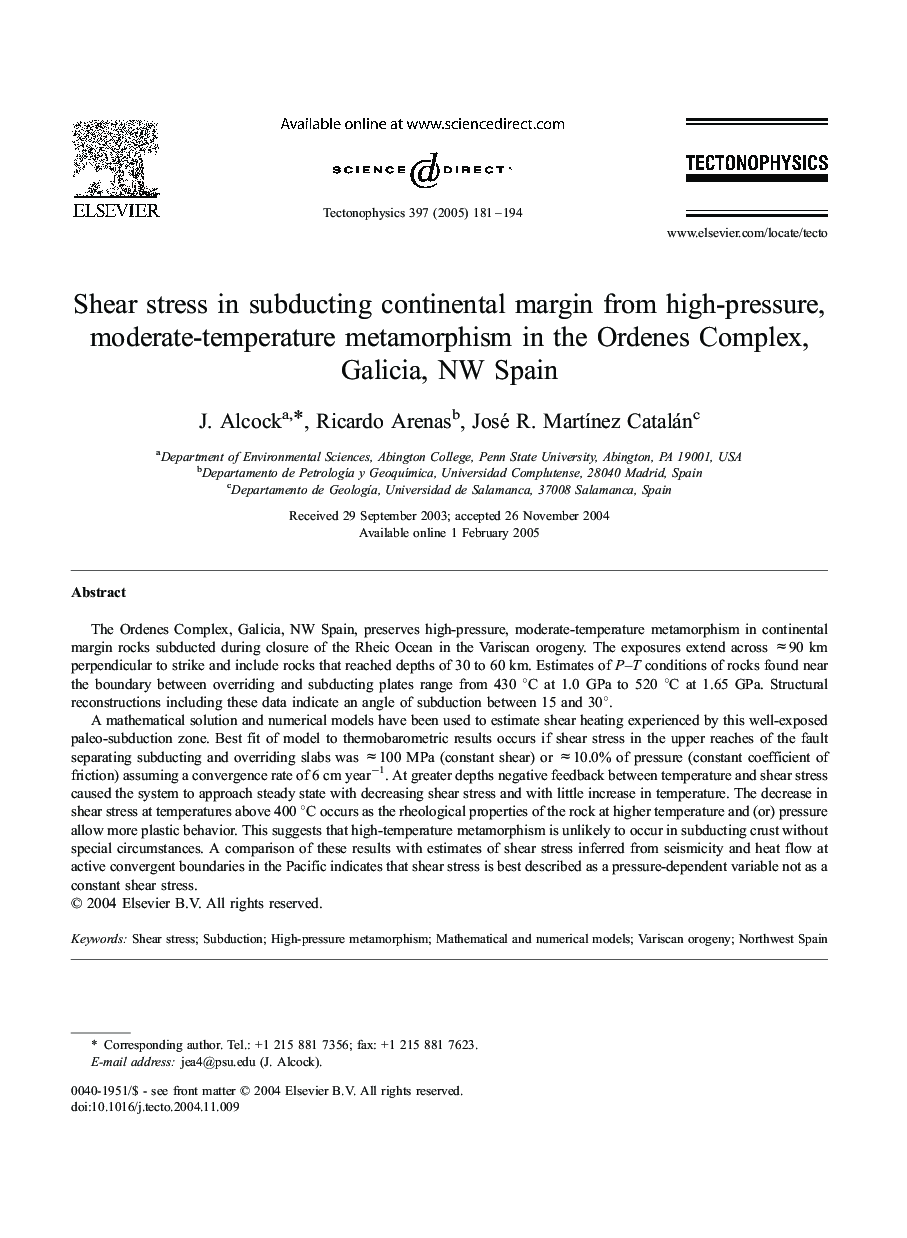| Article ID | Journal | Published Year | Pages | File Type |
|---|---|---|---|---|
| 9527330 | Tectonophysics | 2005 | 14 Pages |
Abstract
A mathematical solution and numerical models have been used to estimate shear heating experienced by this well-exposed paleo-subduction zone. Best fit of model to thermobarometric results occurs if shear stress in the upper reaches of the fault separating subducting and overriding slabs was â100 MPa (constant shear) or â10.0% of pressure (constant coefficient of friction) assuming a convergence rate of 6 cm yearâ1. At greater depths negative feedback between temperature and shear stress caused the system to approach steady state with decreasing shear stress and with little increase in temperature. The decrease in shear stress at temperatures above 400 °C occurs as the rheological properties of the rock at higher temperature and (or) pressure allow more plastic behavior. This suggests that high-temperature metamorphism is unlikely to occur in subducting crust without special circumstances. A comparison of these results with estimates of shear stress inferred from seismicity and heat flow at active convergent boundaries in the Pacific indicates that shear stress is best described as a pressure-dependent variable not as a constant shear stress.
Related Topics
Physical Sciences and Engineering
Earth and Planetary Sciences
Earth-Surface Processes
Authors
J. Alcock, Ricardo Arenas, José R. MartÃnez Catalán,
